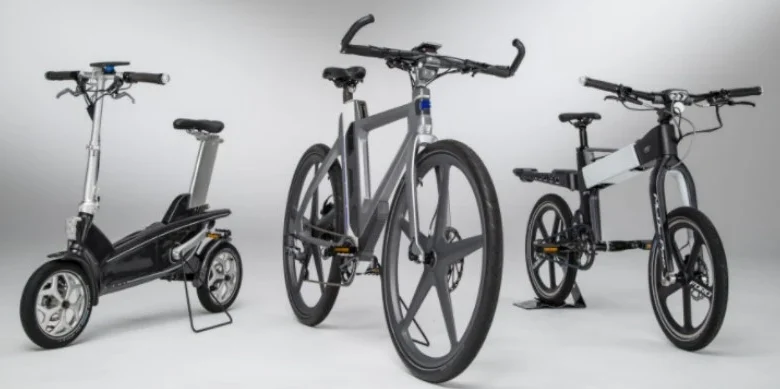
Electric bikes have revolutionized commuting, and at the heart of this revolution is the debate between Ebike lithium batteries and traditional power sources. In this comprehensive exploration, we delve into the myths surrounding both, decoding the facts to help you make an informed decision about your electric mobility. As a leading China Ebike lithium battery supplier and manufacturer, we redefine electric mobility. Our commitment to innovation ensures cutting-edge technology, while sustainability remains at our core. Elevate your ride with our lithium batteries, setting new standards for performance and reliability in the world of electric bikes. Choose excellence with us.
Unraveling the Technology
Ebike Lithium Battery: The Power Within
Ebike lithium batteries are the driving force behind electric bikes, providing a lightweight, high-energy-density solution for efficient rides. With advancements in technology, these batteries deliver extended ranges, quick charging times, and durability.
Traditional Power: The Conventional Approach
Traditional power sources, often lead-acid batteries or gas engines, have been the norm for many years. While reliable, they come with challenges like weight, limited range, and longer charging times.
Busting the Myths
Myth 1: Lithium Batteries Lack Longevity
Contrary to popular belief, Ebike lithium batteries boast impressive lifespans, often outlasting traditional options. With proper care and charging practices, these batteries prove to be a reliable, long-term solution.
Myth 2: Traditional Power Is More Reliable
While traditional power sources are known for their reliability, Ebike lithium batteries have evolved to offer comparable dependability. With proper maintenance, lithium batteries now stand as reliable alternatives for electric bikes.
Efficiency and Performance
Ebike Lithium: Efficient and Lightweight
The lightweight nature of lithium batteries contributes to the overall efficiency of electric bikes. This not only enhances performance but also makes electric bikes more maneuverable and enjoyable to ride.
Traditional Power: A Heavier Choice
Traditional power sources, being heavier, can impact the overall performance and handling of electric bikes. This weight becomes a crucial factor, especially for riders seeking agility and ease of use.
Environmental Impact
Ebike Lithium: A Greener Option
Lithium batteries are known for their eco-friendly characteristics. They have a lower environmental impact compared to traditional power sources, which may involve lead-acid batteries or reliance on fossil fuels. Ebike lithium batteries emerge as a greener option in electric mobility. Their eco-friendly nature stems from lower environmental impact, a reduction in emissions, and the use of sustainable materials. Choosing Ebike lithium means actively participating in the global push towards a cleaner, more sustainable future where every ride contributes to environmental conservation. This choice not only enhances the rider’s experience but also aligns with the broader mission of building a greener tomorrow.
Traditional Power: Pollution Concerns
Gas engines, often used in traditional power sources, emit pollutants that contribute to air and noise pollution. Ebike lithium batteries, being electric, produce zero emissions during operation. Traditional power, like gas engines, raises pollution concerns with emissions impacting air quality and creating noise disturbances. Choosing this route means accepting the environmental consequences. In contrast, Ebike lithium batteries offer a cleaner, greener alternative, aligning with the global shift toward sustainable transportation.
Cost Considerations
Ebike Lithium: An Initial Investment
While Ebike lithium batteries may require a higher initial investment, their advantages extend beyond mere cost. The longevity and efficiency of lithium batteries result in a cost-effective solution over time, minimizing the need for frequent replacements. Additionally, the environmental benefits and performance enhancements make them a strategic investment for riders seeking a reliable and sustainable electric bike experience. Embracing the Ebike lithium battery is not just an upfront choice; it’s a forward-looking investment in the future of electric mobility.
Traditional Power: Lower Initial Costs
Traditional power sources might have lower upfront costs, but factors like maintenance, fuel, and environmental impact can contribute to hidden expenses over time. Traditional power sources, such as lead-acid batteries or gas engines, indeed offer lower initial costs for electric bikes. This affordability, however, should be weighed against long-term considerations like maintenance, fuel expenses, and environmental impact. While the upfront expense may seem attractive, the hidden costs associated with traditional power make it crucial for riders to assess the overall value and sustainability of their chosen power source.
Conclusion: Deciding the Future of Electric Mobility
In conclusion, the choice between the Ebike lithium battery and traditional power sources boils down to individual preferences, priorities, and the specific needs of the rider. The myths surrounding both options are dispelled, leaving you with a clear understanding of the advantages each brings to the table. As electric mobility continues to evolve, the decisions you make will contribute to shaping the future of sustainable and efficient transportation.



